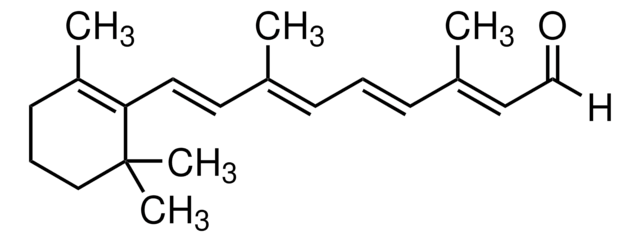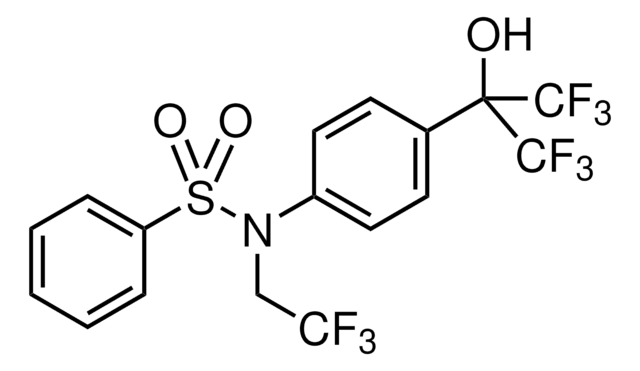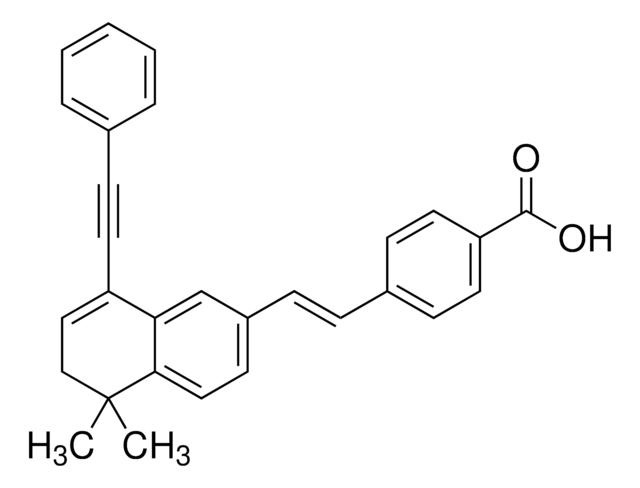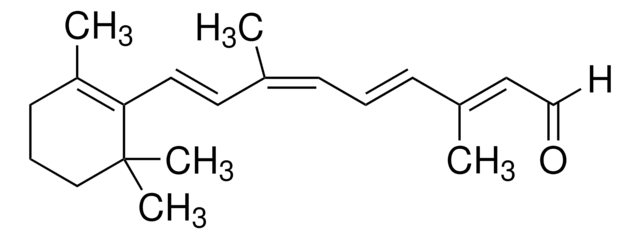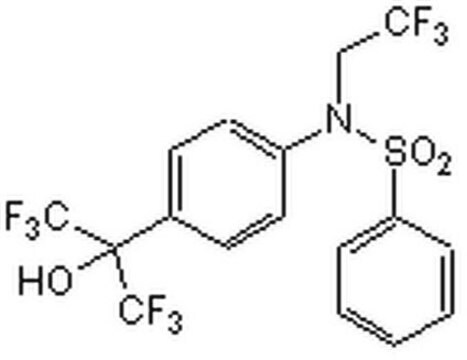R4643
9-cis-Retinoic acid
≥98% (HPLC)
Synonym(s):
9-cis-Tretinoin, Alitretinoin
About This Item
Recommended Products
biological source
natural
Quality Level
Assay
≥98% (HPLC)
form
powder
technique(s)
HPLC: suitable
color
light yellow to yellow-orange
mp
189-190 °C
storage temp.
−20°C
SMILES string
CC1=C(\C=C\C(C)=C/C=C/C(C)=C/C(O)=O)C(C)(C)CCC1
InChI
1S/C20H28O2/c1-15(8-6-9-16(2)14-19(21)22)11-12-18-17(3)10-7-13-20(18,4)5/h6,8-9,11-12,14H,7,10,13H2,1-5H3,(H,21,22)/b9-6+,12-11+,15-8-,16-14+
InChI key
SHGAZHPCJJPHSC-ZVCIMWCZSA-N
Gene Information
human ... RARA(5914) , RARB(5915) , RARG(5916) , RXRA(6256) , RXRB(6257) , RXRG(6258)
Looking for similar products? Visit Product Comparison Guide
Application
- as ligand for retinoid X receptor gamma (RXRγ) for inducing oligodendrocyte precursor cells differentiation and remyelination
- as a medium component to study its effect on UDP-glucuronosyltransferases (UGT) expression in thyroid induced hepatocytes
- to induce lymphangiogenesis in lymphatic endothelial cell
Biochem/physiol Actions
Features and Benefits
Packaging
Signal Word
Danger
Hazard Statements
Precautionary Statements
Hazard Classifications
Eye Irrit. 2 - Repr. 1B - Skin Irrit. 2 - STOT SE 3
Target Organs
Respiratory system
Storage Class Code
6.1C - Combustible acute toxic Cat.3 / toxic compounds or compounds which causing chronic effects
WGK
WGK 3
Flash Point(F)
Not applicable
Flash Point(C)
Not applicable
Personal Protective Equipment
Choose from one of the most recent versions:
Already Own This Product?
Find documentation for the products that you have recently purchased in the Document Library.
Customers Also Viewed
Articles
All-trans retinoic acid (RA, ATRA) is a pleiotropic activation factor that regulates genes associated with normal vertebrate cellular processes such as cell differentiation, cell proliferation, apoptosis, and embryonic development.
Related Content
We offer a variety of small molecule research tools, such as transcription factor modulators, inhibitors of chromatin modifying enzymes, and agonists/antagonists for target identification and validation in gene regulation research; a selection of these research tools is shown below.
Our team of scientists has experience in all areas of research including Life Science, Material Science, Chemical Synthesis, Chromatography, Analytical and many others.
Contact Technical Service

